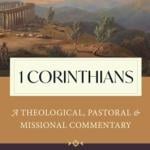In addition to heaven, earth, sea, and underworld, Mesopotamian cosmology believes in an intermediate region between the earth and the underworld, belonging to the god Ea. Though not entirely consistent in mythologies, and the relationship between the Apsu and the sea and the Apsu and the underworld is ambiguous, Horowitz (Mesopotamia Cosmic Geography, 344) claims that the Apsu has common elements in most accounts: “The Apsu is always filled with waters, the Apsu is always lower than the earth’s surface,... Read more
















